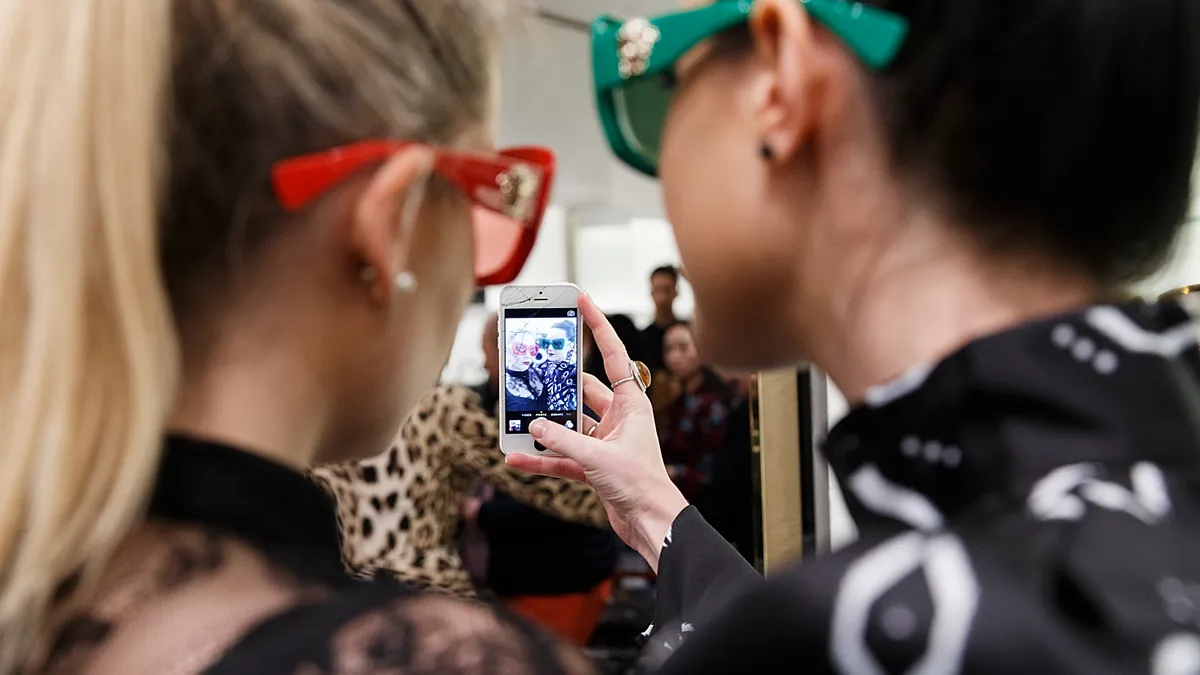Technobabble is our look at the more colorful aspects of technology and the tech industry. Be sure to check out our most recent edition featuring data centers at the edge of the world.
What is the cybersecurity community missing? No, it's not a mythical (and secretly longed for) silver bullet for security. And no, it's not the extreme lack of security regulations either.
I'm talking about the lack of sage fashion advice for the security conscious.
That's where VanitySec comes in. Officially created last weekend and announced on Monday, VanitySec is a place where information security and fashion combine.
Create Your Own Artwork from Your Favorite Malware by @malwareunicorn https://t.co/NfjDNltxBa
— VanitySec (@VanitySec) August 22, 2017
It largely started as a joke, said Amanda Rousseau, malware researcher at Endgame, Inc. and one of the creators of VanitySec, in a Twitter conversation with CIO Dive. Initially intending to make a fake Vogue cover with InfoSec headlines, Rousseau reached out to her InfoSec womens' chat group and decided to create a fashion InfoSec magazine instead.
"It's really an outlet to provide fashion tips and also create funny infosec parodies," Rousseau said. "We do put thought into the items we choose, things we can't always share with our masculine counterparts."
VanitySec is more than just a repository for recommendations of fall bags to conceal RFID readers or tips on how to turn RSA tokens from "drap to fab." It serves up commentary on the fashion industry and illustrates just how male-dominated the sector is. With just 11% women in the cybersecurity workforce, outlets like VanitySec can help create a sense of community and a supportive environment in the security field.
While you're looking for secure fashion advice, you may want to know: What's Rousseau's gadget of choice? It's her keychain holding her YubiKey, VPN key and USB.
The best keyboard for long nails is tall one with tall keys and quiet clicks. Good brands should offer these options. https://t.co/qPrEARqSxU
— VanitySec (@VanitySec) August 24, 2017
One macro thing
It is natural to be suspicious of the unknown, particularly when it comes to changes in society. Take technology, for example. While tech users haven’t retreated from most emerging tech, many have admitted some anxieties about a technology-centric future.
Wired created an Anxiety Matrix to illustrate the extreme ends of our technological reservations. The company noted some reservations in tech can be justified while others can be treated as a "we’ll cross that bridge when we get there" concept.
Some tech anxieties actually have a price tag, which can be lot more expensive than a bottle of Xanax. Falling for a phishing scheme in the enterprise, such as fake emails from a CEO, have cost companies about $5.3 billion in the last three years. Not only are the emails financially crippling, they serve as a general employee distraction.
As for that sticker people place over their computer webcams, that is quickly becoming best practice and not just a move paranoid coworkers make. With the interconnectivity of the Internet of Things (IoT), the possibility of "the government [spying] on you via computer camera" may be a real one, Wired reports.
The IoT has a fragile reputation in security. In fact, last year researchers found that an app running on IoT devices had security holes that enabled phone hacking, including access to telephone, camera, storage and location. But despite the apparent risk factors, 21 billion active IoT devices are expected to be present in homes and companies by 2020.
Artificial intelligence (AI) is scrutinized for its susceptibility to human bias, occasionally exhibiting racist or sexist inclinations as seen in Microsoft’s dismantled chatbot, Tay. However, while internet users were more to blame for Tay’s racist and sexist rhetoric, emerging AI has seen the same sexism that plagues women in tech. As The Guardian points out, AI assistants such as Siri and Alexa can already be seen as "subservient female personas."
If that isn't enough, general bias in AI is a real dilemma even for the U.S. government, as shown by the Department of Justice's use of an AI software with biased distribution of criminal bonds, reported Co.Design. To combat potentially racist AI, developments to test discriminations have been made. Themis is a test code that can change "specific variables methodically — whether it be race, gender, or something far more abstract — [so] it can spot patterns of prejudice in any web form," according to Co.Design.
One micro thing
With large volumes of data created daily, researchers are scrambling to come up with new storage methods. That's in part what brought a group of U.K.-based researchers to look into cold storage.
University of Manchester researchers believe unstable molecules frozen at -213°C could be used to store more than 30 terabits of data per square centimeter in hard drives, according to an Axios report. That’s approximately the equivalent of 5,300 full movies saved on a postage-stamp sized hard drive.
Hard drives encode data along the magnetic fields in groups of magnetized molecules, but the amount of data stored has been limited because individual molecules cannot hold onto their magnetic orientation. Freezing the molecules enough forces them to retain their ‘magnetic memory’ and hold more data.
The researchers want to replicate the success at -196°C — the temperature of liquid nitrogen — for data center applications.
Companies are currently experimenting with several unconventional ways to store data. As more businesses turn to digitalization, the demand for data centers grows and supply needs to keep pace. This discovery may go hand-in-hand with efforts to store data in space, where molecules would be easily cooled by the -270°C temperature.
One last thing
To make the Chicken Mastery program even more well-rounded, KFC debuted a virtual reality employee-training program to teach cooks how to fry the company’s signature food, according to Fortune.
This pinnacle of VR innovation comes at a time when U.S. spending on AR and VR technology is projected to increase from 2017’s 11.4 billion to $215 billion by 2021. Companies are steadily finding unique applications across industries and turning it into a more common feature of modern workplaces.
Wieden+Kennedy developed the game for KFC on Facebook’s Oculus Rift VR headset. Over the course of 10 minutes, employees learn to inspect, rinse, bread, rack and fry virtual chickens, reducing training time from 25 to 10 minutes.
Questions still unanswered, even by the VR headset: Are these puppies or chicken?
labradoodle or fried chicken ? pic.twitter.com/wn5bdjdtDf
— karen zack (@teenybiscuit) March 3, 2016





















